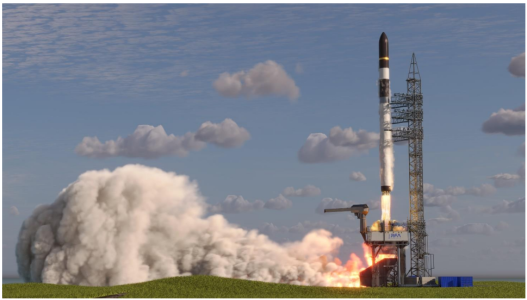Preparation activities of Launch Services for European privately-developed mini/micro launchers

ESA is interested in launch services from European operators of European privately developed launch services for its mission needs. The aim of this Preparation activity was to identify the capabilities of European companies, assess their robustness and help prepare them to become ESA’s launch service suppliers. Rocket Factory Augsburg (RFA) was founded in 2018 with a vision to facilitate data-driven business models in space, RFA strives to enhance Earth monitoring, protection, and connectivity. RFA is currently developing the RFA ONE launch vehicle, targeting its first test flight in 2024. With its payload capabilities it is well suited for the ESA missions such as DRACO, LUMIO, SATIS and LEO-PNT. The activity summarised the current development status of the launch system and the roadmap toward its first launch and extended to the referenced ESA missions, its industrialization and commercialization. Once in commercial service, RFA expects the RFA ONE launch service to be a perfect fit to serve ESA’s future missions, including the most ambitious.
RFA ONE Launch System RFA ONE’s 3-stage-to-orbit launch system architecture, with two stages and the Redshift OTV acting as a third stage, enables both greater performance and orbital flexibility. The RFA ONE launch vehicle utilizes highly efficient staged combustion engines developed by RFA enabling more payload performance compared to commonly used open-cycle engines. Staged combustion engines (Helix engines) are used in both the first and the second stages of RFA ONE. By leveraging advanced propulsion technology, RFA is assured to redefine the capabilities and cost-effectiveness of space launch operations, further solidifying its position as a leader in the space industry.
Another key enabler for the ESA missions is the Redshift Orbital Transfer Vehicle (OTV) which allows missions also beyond Low Earth Orbit (LEO) from a relatively small launch system. With Redshift, RFA sets a new standard in space mission flexibility and efficiency. Unlike conventional OTVs carried as separate payloads, the Redshift OTV is seamlessly integrated into RFA's launch system, enabling fully customized and complex missions tailored to diverse orbital requirements. From deploying constellations in LEO to navigating spacecraft to high-energy orbits like MEO, GTO, and beyond. RFA prioritizes environmental aspects and space debris mitigation. The RFA ONE launch system's three-stage architecture uses non-toxic liquid propellants and was designed with debris mitigation in mind, aligning with ESA and sustainable space activity standards.
RFA with its RFA ONE launch system demonstrates its robustness through technical advancements, commercial positioning, and financial stability in the launch services market. A preliminary mission analysis including trajectory calculations and interface definition was conducted to customise RFA’s launch services to meet the specific requirements of four ESA missions: DRACO, LUMIO, SATIS, and LEO PNT. Furthermore, to evaluate potential gaps in both the vehicle technology or the launch service capability, a comparison overview for the 4 respective missions was created. A roadmap has been outlined to address the successful development and deployment of RFA ONE in particular the services for this call.
The analysis performed within this study shows that all ESA missions of this call can be realized with the RFA One launch system thanks to its particular capabilities for a small launcher. The RFA ONE launch vehicle emerges as the optimal choice for the DRACO, LUMIO, SATIS, and LEO-PNT missions. The three-stage architecture including the Redshift OTV offers or exceeds the required payload capacity, low-cost solutions, and flexibility, with interfaces aligning well with mission requirements. A preliminary structural analysis confirms the compatibility for all payloads referenced in the call. Also, the RFA facilities already in place and nearing completion are suitable for supporting these missions. For DRACO, RFA's flexibility in selecting impact locations sets it apart from other launch services. For LUMIO, RFA ONE can deliver the payload to a highly elliptical transfer orbit to the Moon, with launch options from Kourou and SaxaVord. For SATIS, Redshift's remarkable delta-V performance maximizes payload delivery, with flexibility in burn sequences. For LEO-PNT, Redshift's RAAN shift capability efficiently places satellites into separate orbital planes, with a short mission duration and optional de-orbiting burn for space debris mitigation
